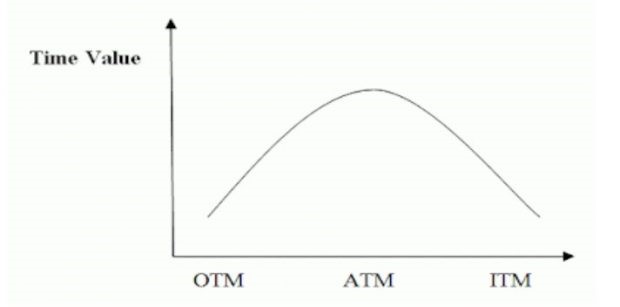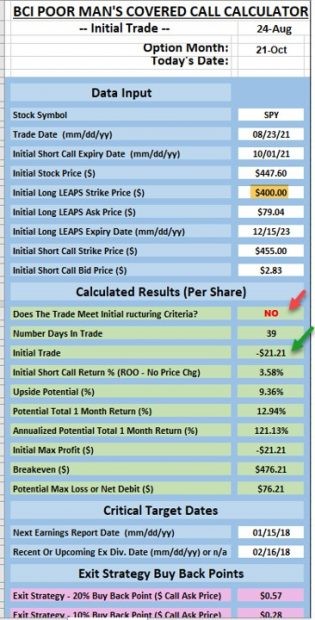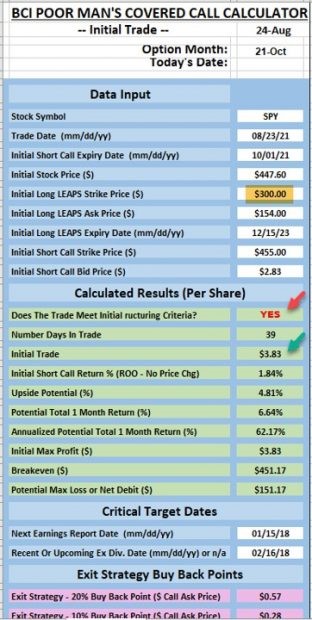Before initiating a poor man’s covered call trade (PMCC), we must first master all aspects of the strategy, including understanding the pros and cons inherent in this system, states Allan Ellman of The Blue Collar Investor.
Once we have made a decision that this strategy is appropriate for our portfolios, the next step is to analyze our initial trade structuring calculations. We want to ensure that, if share price accelerates substantially and we are forced to close both legs of the trade, we will close at a profit. Key to accomplishing this goal is the time-value component of the long LEAPS positions. If the time-value is too high, closing both legs may result in a loss. The first tab of the BCI PMCC Calculator will give us a “YES” or a “NO” when entering the initial trade data.
What is the PMCC Strategy?
This is a covered call writing-like strategy where a LEAPS option is purchased instead of the stock or ETF itself. This allows us to enter covered call trades with a lower cash investment. There are several pros and cons associated with this strategy.
What is SPY?
The SPDR S&P 500 (SPY) trust is an exchange-traded fund which trades on the NYSE. SPDR is an acronym for the Standard & Poor’s Depositary Receipts, the former name of the ETF. It is designed to track the S&P 500 stock market index. This fund is the largest ETF in the world.
Time-Value of Our Premiums and the “Moneyness” of Our Call Strikes
At-the-money (ATM) or near-the-money (NTM) strikes have the greatest premium time-value. As the strike moves deeper in-the-money (ITM) or out-of-the-money (OTM), the time-value decreases and moves towards zero. Here is a graphic representation of this relationship:

Relationship Between Premium Time-Value and the “Moneyness” of an Option
Real-life Example with SPY: Inappropriate Initial Trade Structuring with the $400.00 LEAPS Strike

PMCC SPY Trade with the $400.00 LEAPS Strike
- Red arrow: The BCI PMCC Calculator highlights that this an inappropriate trade based on the BCI methodology.
- Green arrow: Closing both legs of the trade, should share price accelerate, will result in a loss of $21.21 per-share.
This is a direct result of the time-value component of the $400.00 LEAPS being too high.
Real-Life Example with SPY: Appropriate Initial Trade Structuring with the $300.00 LEAPS Strike

PMCC SPY Trade with the $300.00 LEAPS Strike
- Red arrow: The BCI PMCC Calculator highlights that this an appropriate trade based on the BCI methodology.
- Green arrow: Closing both legs of the trade, should share price accelerate, will result in a gain of $3.83 per-share.
This is a direct result of the (much lower) time-value component of the $300.00 LEAPS being appropriate for our initial PMCC trade structuring.
Discussion
When setting up our PMCC trades, we must be sure that if we are forced to close our total trade positions, that we will close at a profit. This means that the time-value debit when purchasing the LEAPS option cannot be too high, causing the trade to close at a loss. To decrease the time-value component of the LEAPS, we go deeper in-the-money. As we do so, the time-value will decline but the intrinsic-value component will increase, meaning we will pay more to enter the trade. Lots to think about, but the calculator will do all the heavy lifting when it comes to these calculations.
Learn more about Alan Ellman on the Blue Collar Investor Website.




















